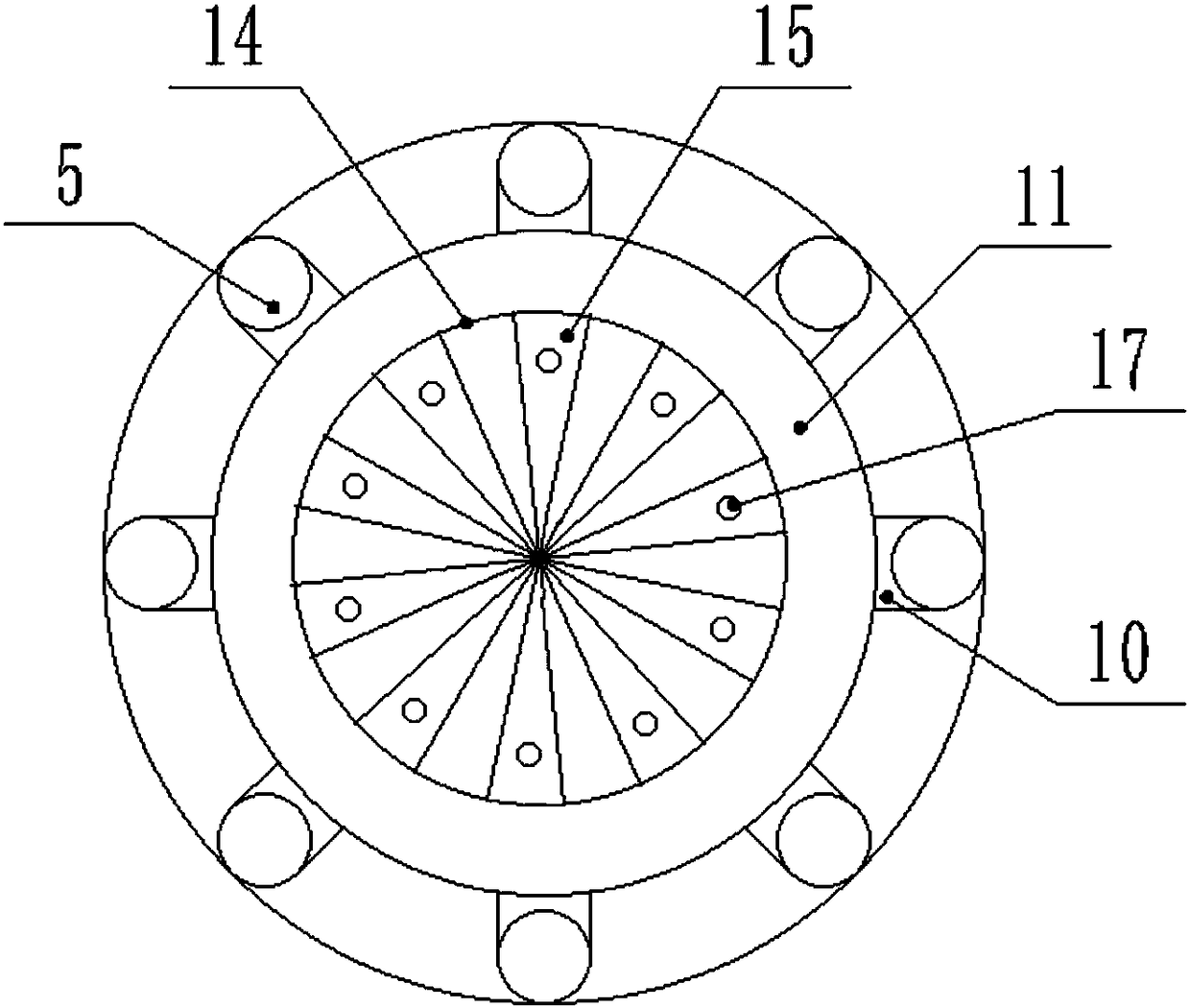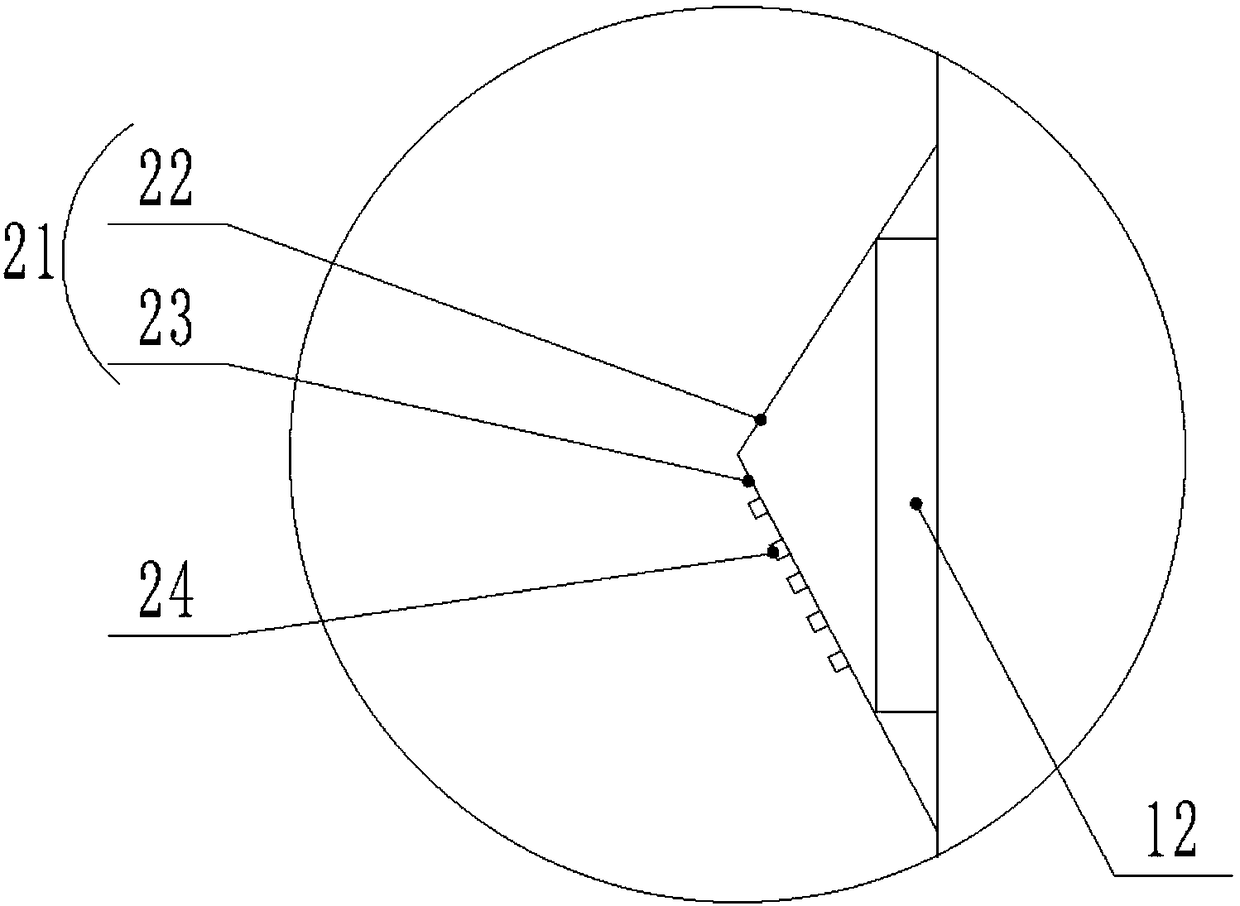Converter high in fuel utilization rate
A utilization rate and fuel technology, applied in the manufacture of converters, etc., can solve the problems of fuel consumption, limited air supply, serious problems, etc., and achieve the effects of improving the combustion effect, enhancing the combustion temperature, and increasing the heating speed
- Summary
- Abstract
- Description
- Claims
- Application Information
AI Technical Summary
Problems solved by technology
Method used
Image
Examples
Embodiment 1
[0033] Such as Figure 1-4As shown, a converter with high fuel utilization rate includes a furnace body 1 and a furnace base 2, and the furnace body 1 is provided with a ventilation assembly and a combustion frame 3 for placing fuel; on the side wall of the furnace body 1 A cavity 4 is provided; the air guide assembly includes an air guide pipe 5, an air collection chamber 6, a ventilation assembly, a rotating shaft 7 and a motor 8, and the air guide pipe 5 runs through the cavity 4 and is circumferentially distributed on the furnace body 1, the top of the air guide pipe 5 is arranged outside the furnace body 1, and the bottom end of the air guide pipe 5 communicates with the air collection chamber 6, and the air collection chamber 6 is arranged at the bottom of the furnace body 1; the air collection chamber The top of 6 is provided with several first air outlet pipes 9;
[0034] The top of the air guide pipe 5 is provided with an air induction pipe, and the air induction pip...
Embodiment 2
[0043] Such as Figure 1-4 As shown, this implementation is further optimized on the basis of Embodiment 1. This embodiment focuses on the improvements compared with Embodiment 1, and the similarities will not be repeated. In this embodiment, the first output The outlet end of the air duct 9 is provided with a first baffle plate 20 with a herringbone cross section, the top of the first air outlet duct 9 is embedded between the first baffle plates 20, and the side of the first air outlet duct 9 The wall is provided with a through first ventilation hole 25 . The air can escape from the first ventilation hole 25 and will not be blocked by residues on the air guide pipe 5 pipes. The first baffle plate 20 can solve the problem that the residue generated by fuel combustion blocks the air guide pipe 5 pipes and prevents the outside air from entering the air guide pipe 5. In the converter, the fuel is not in sufficient contact with the air, which affects the normal operation of the c...
Embodiment 3
[0045] Such as Figure 1-4 As shown, this implementation is further optimized on the basis of Embodiment 1. This embodiment focuses on the improvements compared with Embodiment 1, and the similarities will not be repeated. In this embodiment, the second output The outlet end of air duct 12 is provided with the second baffle plate 21 that cross-section is herringbone, and described second baffle plate 21 is made up of upper baffle plate 22 and lower baffle plate 23, and the upper baffle plate 22 and lower baffle plate 23 One end is connected, and the other ends of the upper baffle 22 and the lower baffle 23 are respectively connected with the side wall of the ventilation chamber 11 , and the lower baffle 23 is provided with a plurality of second ventilation holes 24 . The second ventilation hole 24 on the lower baffle plate 23 can diffuse the air in the ventilation chamber 11 into the body of heater 1, so that the fuel in the burning state on the combustion rack 3 can be burned...
PUM
 Login to View More
Login to View More Abstract
Description
Claims
Application Information
 Login to View More
Login to View More - R&D
- Intellectual Property
- Life Sciences
- Materials
- Tech Scout
- Unparalleled Data Quality
- Higher Quality Content
- 60% Fewer Hallucinations
Browse by: Latest US Patents, China's latest patents, Technical Efficacy Thesaurus, Application Domain, Technology Topic, Popular Technical Reports.
© 2025 PatSnap. All rights reserved.Legal|Privacy policy|Modern Slavery Act Transparency Statement|Sitemap|About US| Contact US: help@patsnap.com



